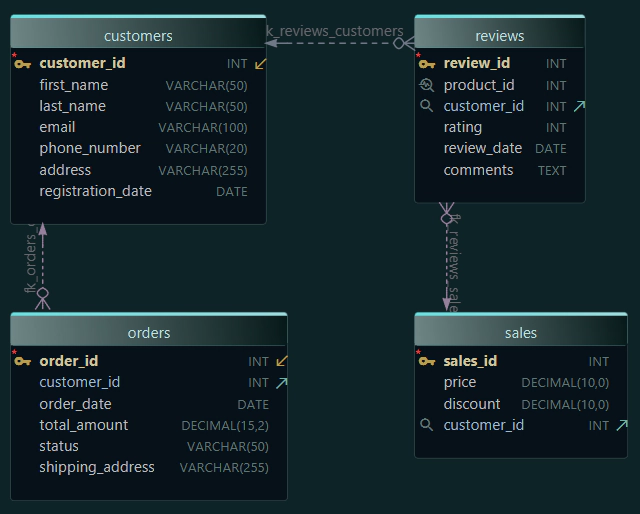Best Oracle Database Design Tools in 2025

When you're looking for a database design tool, it's not just for fun - you actually need one! Maybe for a project, an internship, a thesis, or real production work. And most of us have a few clear criteria before we even start testing.
First: can you afford it?
Sure, there are plenty of tools on the market, from free to ridiculously expensive - but let’s be honest: you want something good and affordable.
Second: does it work on your system?
Whether you're on Windows, Mac, or Linux, it has to run smoothly and not make your setup a mess. That’s why checking for a free trial is a must.
And finally, the most important part - what can the tool actually do for you?
You probably want to:
- Draw diagrams without pain
- Work together with your team (and not overwrite each other’s work)
- Write and test code
- Generate clean documentation
- Track changes
- Maybe even reverse engineer an old Oracle DB
If the tool can’t handle that, it’s not worth your time.
So here’s a comparison of the top Oracle design tools worth looking at this year - with all the practical details that matter.
| Design Tool | Platform | Runs On | Pricing | Free Trial | Key Strength | Best For | Website |
|---|---|---|---|---|---|---|---|
 1. DbSchema 1. DbSchema | Desktop | Windows, macOS, Linux | Free Community Edition; Pro: $19.60/month or $196 one-time | 30 days | Visual diagrams + Git + docs | Schema design and documentation | Visit |
| Desktop | Windows, macOS, Linux | Free | N/A | Native Oracle support + rich modeling | Enterprise Oracle environments | Visit | |
 3. Vertabelo 3. Vertabelo | Cloud/Desktop | Browser | From $18/month (individual) | 7 days | Modern UX + versioning | Teams working online | Visit |
 4. Aqua Data Studio 4. Aqua Data Studio | Desktop | Windows, macOS, Linux | From $499 per user | 14 days | Multi-purpose IDE + visual modeling | Analysts & engineers | Visit |
| Desktop | Windows, macOS, Linux | $99/year (individual); $229/year (business) | 30 days | Smart code editor + ER diagrams | Developers who write a lot of SQL | Visit | |
 6. DBeaver 6. DBeaver | Desktop | Windows, macOS, Linux | Free Community Edition; Enterprise from $25/month | 14 days | Lightweight multi-DB GUI | Developers handling multiple DBs | Visit |
1. DbSchema
DbSchema is a visual design and management tool that’s been around for over 15 years. It works with Oracle (and a lot of other databases) and is perfect if you like to design schemas before touching any actual data. It doesn’t even need a live connection to get started.
You can use it to:
- Create diagrams that make sense, even for big projects
- Compare your local schema with the database and spot changes
- Build migration scripts that safely update the database
- Open tables and explore the data without writing joins
- Drag-and-drop to build SQL queries, fast
- Work in teams using Git, just like versioning your code
- Generate fake data for testing
- Export HTML5 documentation that actually explains your schema
Pros
- You can design offline, which is super useful when working ahead or planning without a server
- Git integration is built-in, so you can track and merge schema changes with your team
- The HTML5 documentation looks good and makes it easier to show the structure to non-developers
- You can split complex schemas into separate diagrams to keep things clear
Cons
- It has a lot of features, so expect a short learning curve at the beginning - but once you get the flow, it saves a ton of time
- It runs as a desktop app, so if you’re looking for a browser-based tool, this isn’t it - but on the plus side, all your data stays local
2. Oracle SQL Developer Data Modeler
This is Oracle’s official tool for data modeling, and the best part, it’s completely free. It’s made specifically for Oracle databases, so you get deep integration and support for things like logical, relational, and physical models.
It’s ideal if you’re already working in Oracle environments and want a solid, well-documented tool that stays close to Oracle’s own standards.
You can:
- Design logical, relational, and physical models
- Import from existing Oracle databases
- Generate DDL scripts directly from your design
- Run consistency checks on your models
- Create subviews to split large diagrams
Pros
- Free and built by Oracle, so it’s deeply compatible
- Covers all types of data models - logical to physical
- Supports reverse engineering directly from your Oracle DB
- Good choice if you want long-term stability with Oracle tools
Cons
- The interface feels a bit outdated and takes some effort to get used to
- Mainly focused on Oracle, not great if you’re working across multiple DB platforms
Connecting to an existing Oracle database in SQL Developer Data Modeler isn’t direct. You need to go to File → Import → Data Dictionary, create/select a connection, and choose your schema. The tool will then import metadata and generate an ER diagram.
3. Vertabelo
Vertabelo is a modern, online data modeling tool that works in your browser. You don’t need to install anything, and it supports Oracle alongside many other databases. It’s a great option for remote teams who want to work collaboratively.
Everything is saved in the cloud, and you can invite your teammates, track changes, and manage versions like you would in a document editor.
You can:
- Create and edit models from anywhere using just a browser
- Share models with others and set different access levels
- Use version control to go back to older designs
- Export models to DDL scripts for Oracle and other databases
- Add comments and notes directly to the diagram
Pros
- Clean and intuitive interface, easy to learn, even for beginners
- Collaboration is smooth, no need to email files around
- Cloud-based versioning helps you stay organized over time
Cons
- No offline mode -> you need internet access to work
- Paid plans are required for anything beyond the basics
4. Aqua Data Studio
Aqua Data Studio is a powerful IDE with support for many databases, including Oracle. It’s more than just a diagram tool, it includes a query editor, data browser, import/export tools, and more. But fair warning: it’s heavy.
If you only want to generate ER diagrams, you’ll need to be patient. Even on small schemas, it can take up to 5 minutes just to generate a diagram.
You can:
- Connect to Oracle and explore your database visually
- Create ER diagrams from existing databases
- Write, test, and debug SQL queries
- Compare schemas and sync them
- Work with version control tools like Git
- Monitor latch contention and performance metrics for Oracle servers
Pros
- All-in-one IDE with tons of extra tools beyond modeling
- Great for advanced users who need more than just diagrams
- Offers deep insights into schema structures
Cons
- Very large install size (840MB), not ideal if you want something lightweight
- Diagram generation is slow on bigger databases (can take several minutes)
- Feels more like a developer IDE than a design-first tool
5. DataGrip
Let’s be honest - everyone knows JetBrains makes great tools. DataGrip is no exception. It’s a solid choice if you’re a developer who writes a lot of SQL and wants an intelligent editor that actually understands your database structure. It supports Oracle really well and feels smooth to use.
It’s got a slick interface, auto-completion that works across tables, and built-in support for diagrams. You can also connect to multiple databases and manage them from the same place.
You can:
- Write smart SQL with suggestions, quick-fixes, and refactoring
- Connect to multiple Oracle instances and other DBs
- View diagrams for your schema structure
- Track database changes in the local history
- Use it as part of the JetBrains IDE ecosystem
Pros
- One of the smartest SQL editors out there
- Clean UI and great experience if you're already using JetBrains products
- Supports version control, multiple DBs, and detailed introspection
Cons
- If you want deeper features like schema refactoring in context or cross-language integration, you'll probably need other JetBrains IDEs too
- Not a full visual modeling tool, diagrams are there, but not the main focus
6. DBeaver
DBeaver is a lightweight yet powerful database GUI that supports a wide range of databases, including Oracle. It’s especially useful for developers and analysts who need to browse data, run SQL queries, and manage database objects all in one place. While it doesn’t offer full visual modeling, it’s reliable, fast, and flexible for everyday work.
You can:
- Connect to Oracle and many other databases using JDBC
- Browse and edit data from tables and views
- Generate ER diagrams from existing schemas
- Run and organize SQL queries with tabs and history
- Use features like autocomplete, syntax highlighting, explain plans, and formatting
- Compare schemas and generate migration scripts (Pro version)
- Extend functionality with plugins like Git support or Excel export
Pros
- Free and open-source (Community Edition) with a solid feature set
- Good performance even on large Oracle databases
- Supports almost every major database (Oracle, PostgreSQL, MySQL, SQLite, etc.)
- Clean UI and regular updates
Cons
- Diagrams are auto-generated and not suitable for logical design
- Git integration, schema diff, and mock data generator are only in the Enterprise edition
Some Honest Impressions
Each tool has its strengths. Some are great for writing code, others for visual modeling or working with a team.
I often lean toward tools that let me think visually and keep control of the design, that’s why DbSchema stands out to me. But I also see the value in using Vertabelo for collaboration, DataGrip for deep query work, or DBeaver when I just need to move fast.
In the end, it comes down to how you like to work. Try them out and see which one fits your workflow best.

























